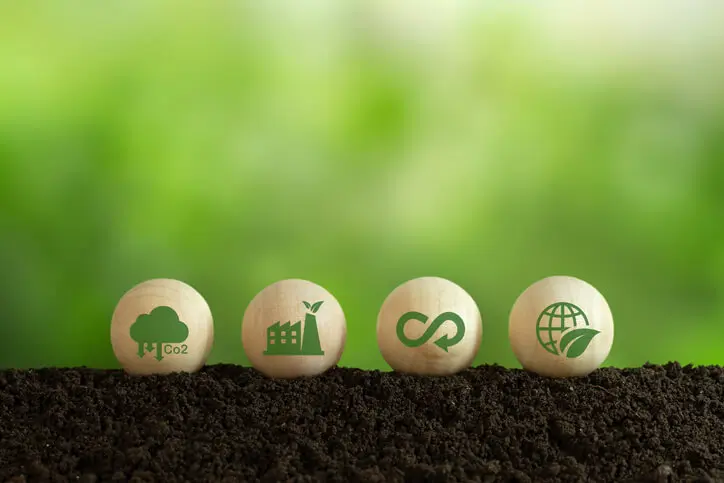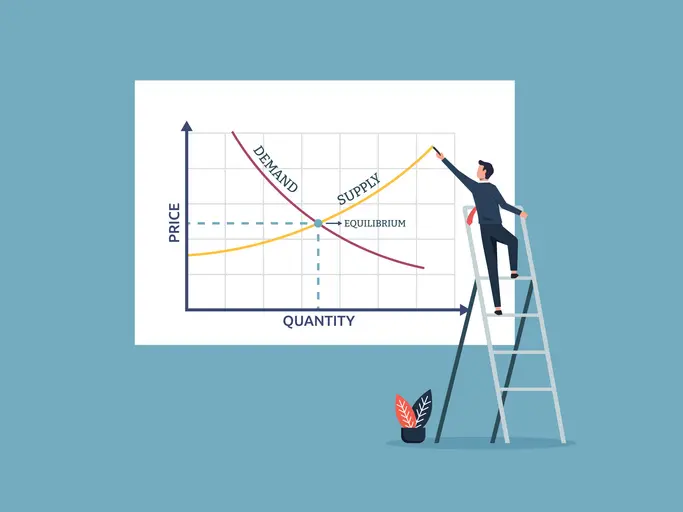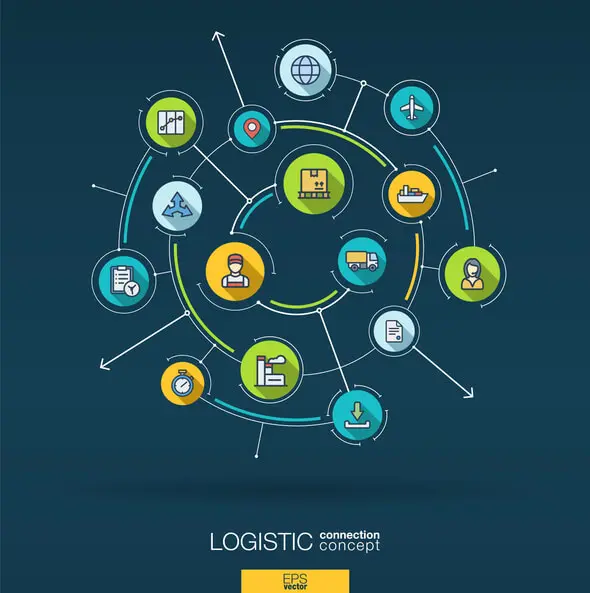In a competitive business environment, supply chain sustainability has undoubtedly become an integral part of corporate responsibility and enduring success. As external pressures and scrutiny arise from various stakeholders, including regulators and consumers, inviting sustainable practices into the supply chain has evolved into a matter of precedence.
In this article, we will explore the substratum of supply chain sustainability, highlighting its importance, challenges, and the manner cutting-edge solutions can be incorporated into responsible business operations to propel your business to sustainable success.
What Is Supply Chain Sustainability?
Supply chain sustainability involves accounting for environmental, social, and economic factors that influence supply chain management. Adopting eco-friendly practices, ethical business conduct, and contributing to social welfare while simultaneously ensuring long-term economic viability, comprise supply chain sustainability. This model of sustainability is characterized by sustainable sourcing, eco-friendly manufacturing, responsible logistics, and effective waste management. With an emphasis on sustainability, companies can reduce their carbon footprint, conserve resources, promote fair labor practices, and enhance transparency. The overarching objective is to create value for all stakeholders while preserving the planet for future generations.
Think of it like a ‘win-win’ scenario.
Why Is Sustainability Crucial in Supply Chains?
Supply chain operations can shape the environment and society in various ways, with risks that stretch from raw material extraction to finished goods distribution. Such unsustainable practices can be detrimental to the business, the environment, and society at large. Results include environmental harm, human rights infringements, and economic instability.
Seamlessly weaving sustainable practices into supply chains is a massive step towards measuring a company’s environmental and societal impact. Environmentally, such measures reduce greenhouse gas emissions, resource depletion, and waste. While for businesses, sustainability boosts brand reputation and encourages customer loyalty as consumers continue to observe and value businesses’ socio-environmental policies. Moreover, sustainable supply chains help manage risks like regulatory penalties, supply chain disruptions, and reputational damage, ensuring
long-term profitability and resilience. Rooting the supply chain in sustainable methods empowers businesses’ to consider that a better, profitable future is one that advocates for a better future for the planet and those inhabiting it as well.
Understanding Different Supply Chain Models
Supply chains are diverse, each with distinctive features and significance within sustainability. With an acute understanding of varying supply chain models, organizations can pinpoint areas for improvement and construct effective sustainability plans. Consider four common supply chain models and their sustainability aspects.
Sustainable Supply Chains
A sustainable supply chain is built around reducing negative environmental, social, and economic impacts throughout its life cycle. Central to this is the implementation of practices that endorse resource efficiency, ethical sourcing, fair labor practices, and responsible waste management. To track sustainability in supply chains, companies often rely on metrics such as carbon footprint, water consumption, waste generation, and compliance with international standards. Furthermore, stakeholder engagement, supplier audits, and transparency initiatives play crucial roles in evaluating and improving sustainability performance.
Ethical Supply Chains
Fundamental to ethical supply chains are social responsibility and fair treatment of workers across the supply chain network. This model consists of endorsing decent working conditions,
upholding human rights, and endorsing ethical business practices between suppliers and partners. Cultivating ethical transparency can pose a challenge to businesses due to an array of
diverse operations, cultural and regulatory frameworks. Companies often employ external help to maintain ethical standards and circumvent possible violations.
Responsible Supply Chains
A responsible supply chain stresses the accountability of companies towards their stakeholders, including employees, communities, and the environment. Crucial to this approach is the interconnectedness of economic, social, and environmental factors and an intention to create shared value for all parties involved. This includes engaging with local communities, sustaining sustainable sourcing practices, promoting diversity and inclusion, and minimizing negative environmental impacts. Notable benefits of this model are improved stakeholder relationships, enhanced brand reputation, and long-term resilience.
Green Supply Chains
Green supply chains delineate environmental sustainability by aiming to reduce waste, lower carbon emissions, and implement low-carbon technologies and processes. This approach centers efforts like improving energy efficiency, using renewable energy, adopting sustainable packaging, and utilizing eco-friendly transportation. Technologies such as IoT sensors, predictive analytics, and blockchain enhance visibility and traceability, enabling data-driven decisions and efficient resource use.
Three Levels of Sustainability
Incorporating true sustainability into the supply chain is not merely a one-dimensional process. It is intricate and multi-dimensional.
Sustainable supply chains necessitate an integrated approach that confronts the environmental, the social, and the economic. Let’s explore these three levels of sustainability and their interdependence.
Environmental Sustainability
Environmental sustainability in supply chains addresses efforts and measurements directed at minimizing the negative impact of operations on the environment. Considerations include reducing carbon footprint, reducing waste, conserving water, and sourcing responsibly from suppliers who adhere to sustainable practices.
Social Sustainability
Social sustainability strategies focus on improving working conditions, promoting community engagement, and facilitating social equity throughout the supply chain. Strategies such as maintaining fair labor practices, supporting community development, promoting supplier diversity, and sustaining human rights principles within the supply chain catalyze social sustainability.
Economic Sustainability
Economic sustainability encompasses the implementation of practices that warrant long-term financial viability and profitability while regarding environmental and social impacts. Essential to this level are cost savings, risk management, innovation and competitiveness, and long-term profitability. Sustainable economic operations can be cost-effective; mitigate risks associated with supply chain disruptions, regulatory changes, and reputational damage; fuel innovation and update value propositions and increase ethical investors, customer loyalty as well as long-term profitability.
Learn more about how to keep a lean inventory.
Statistics and Examples
As the shift towards sustainable supply chains continues, businesses have been exhorted to adopt trends across this domain of impact. Here are some noteworthy examples:
A report by the United Nations Global Compact displaying that companies with sustainable supply chains experience significant growth in topline and profitability. Furthermore, the global market for sustainable supply chain management solutions is expected to reach $49.7 billion by 2027. A study by MIT Sloan Management Review and Boston Consulting Group also reveals that
companies with highly sustainable supply chains outperform their peers in terms of profitability and revenue growth. The Sustainable Procurement Barometer Report 2021 shares that a majority of organizations have a sustainable procurement strategy in place and consider sustainability when selecting suppliers.
Real-world Examples of Sustainable Practices
Two examples of companies actualizing sustainable practices are Ikea and Patagonia.
Ikea aims to become a circular business by 2030 through measures of renewable and recycled materials.
Patagonia is committed to environmental and social responsibility by using recycled materials and supporting fair labor practices and environmental organizations.
Benefits of Embracing Sustainability
Bridging the gap between sustainable processes and the supply chain can prove advantageous to companies and stakeholders. These benefits include enhancing brand reputation and customer loyalty, improving operational efficiency and cost savings, mitigating risks, driving innovation and competitive advantage, attracting and retaining talented employees, and accessing new markets and investor interest. Altogether, championing sustainability in the supply chain can result in long-term value for businesses, stakeholders, and society at large.

Current Challenges
Embracing and affirming sustainable practices in supply chains can be a difficult and volatile task, despite the clear benefits. Let’s touch on the main challenges that businesses encounter in their efforts to be more sustainable.
Network Complexity
Modern supply chains are intricate and involve multiple suppliers, manufacturers, and other stakeholders worldwide. This complexity may pose a challenge in gauging sustainability performance throughout the entire supply chain. Transparency, traceability, and accountability become elusive and hard to maintain as the number of suppliers and tiers increases. Additionally, different regulatory environments, cultural norms, and operational standards in various regions can also add to the complexity of sustainability efforts.
Data Collection and Transparency
Reliable and consistent data is imperative to effectively measuring and monitoring performance in supply chains. However, in complex global networks, gathering accurate data from stakeholders can prove arduous. In order to make informed decisions and monitor progress towards sustainability objectives, companies can ensure transparency and confirm the accuracy of sustainability data provided by various parties.
Balancing Costs with Sustainability Goals
Albeit cost-effective, the introduction of sustainable practices can include initial expenses. These may include investing in new technologies, optimizing processes, conducting supplier audits, and training employees. To maintain profitability and mitigate risks, companies can consider comparing the short-term costs of sustainability initiatives with the long-term benefits and consequences of not taking action. Conducting comprehensive cost-benefit analysis and strategic planning is crucial to ensure that sustainability efforts are in alignment with the company’s overall business objectives and financial targets.
Technological and Strategic Innovations
Contemporary, cutting-edge technologies are setting the stage for conversations around sustainability challenges in supply chains and maximizing their benefits. In this section, we examine some of the most effective innovations promoting sustainablity in supply chains.
Green Technologies
Technological developments are inextricably linked with the promotion of sustainable supply chain practices. Green technologies such as renewable energy solutions, energy-efficient systems, electric vehicles, IoT sensors, and 3D printing are revolutionizing supply chains by reducing carbon footprints, saving energy, and optimizing processes.
Circular Economy and Resource Efficiency
Circular economy principles focus on reducing waste and maximizing resource efficiency by creating a cyclical movement of materials and resources, thus optimizing on longevity. Companies are leaning towards strategies such as designing products for recycling, creating closed-loop systems for material reuse, refurbishing products, and promoting industrial symbiosis. By adopting these principles, companies can reduce their environmental impact and create new business opportunities.
Strategic Innovations
Along with the latest technologies, companies are now employing strategies and operations to improve sustainability in their supply chains. Let’s observe some of these strategic changes.
Sustainable Procurement Practices
Sustainable procurement practices are crucial for organizations to ensure the sustainability of their supply chain. Companies are adopting strategies such as evaluating suppliers based on their sustainability performance, collaborating with them to improve sustainability practices, implementing sourcing policies that prioritize sustainable materials, and enhancing transparency in the supply chain. By incorporating sustainability into procurement, companies can make a positive impact on their supply chain and build strong relationships with responsible suppliers.
Eco-Efficient Operations
Tacitly, eco-efficient operations involve optimizing processes to reduce environmental impact in supply chains. Strategies include lean manufacturing, energy and water efficiency, sustainable packaging, and warehouse optimization. Implementing these practices can lead to cost savings, increased productivity, and minimized environmental impact.
Sustainable Logistics
Sustainable logistics is essential for maintaining environmentally friendly supply chains by focusing on the efficient transportation, storage, and distribution of goods. This article discusses various methods and advancements in sustainable logistics.
Reverse Logistics
Reverse logistics accounts for managing the flow of products, materials, and information from consumption back through the supply chain. It is essential for sustainable supply chains as it allows for efficient product returns, end-of-life product management, remanufacturing, and closed-loop supply chains. These processes help minimize waste, reduce environmental impact, extend product lifespan, and maximize resource efficiency.
Recycling
Recycling initiatives in the supply chain are prerequisites for reducing waste, preserving natural resources, and lessening environmental impact. Companies are embracing various recycling strategies, including post-consumer recycling, industrial recycling, closed-loop recycling, and waste-to-energy solutions. Such initiatives help divert waste from landfills, decrease the use of new materials, and promote a circular economy.
Regulatory Frameworks
The integration of sustainable practices within supply chains is influenced by various regulatory frameworks and voluntary industry standards. Below, we will assess the impact of these frameworks on supply chain sustainability.
Regulatory and Voluntary Frameworks
Government regulations and industry-specific standards influence sustainability efforts in supply chains. Examples include environmental regulations like the EU ETS and EPA regulations, labor laws, and human rights regulations, product stewardship laws, and industry standards like ISO 14001 and FSC certification. Compliance with these regulations and standards is challenging for companies with global supply chains but necessary for legal and ethical operations and meeting stakeholder expectations.
Ethical Considerations
Sustainability in supply chains transcends environmental concerns to encompass ethical and social responsibility too. This part of the discussion dives into the significance of ethical behavior and social responsibility in ensuring sustainable and accountable supply chains.
Social Responsibility
Social responsibility is a determining factor of supply chain sustainability and confronts the welfare of workers, communities, and society as a whole. Companies are increasingly realizing its significance and are carrying through various initiatives such as fair labor practices, community engagement, human rights due diligence, and supplier diversity and inclusion. By prioritizing social responsibility, companies can strengthen relationships with stakeholders, establish trust, and enhance the well-being of the communities they serve.
Ethical Practices
A commitment to ethical integrity in the supply chain is essential for long-term sustainability and responsible business practices. Companies are gearing towards various strategies to promote ethics, including carefully selecting suppliers that follow ethical standards, establishing clear codes of conduct for suppliers, enhancing transparency and traceability in the supply chain, conducting third-party audits, and providing whistleblower protection. With an obligation towards ethical practices, companies can reduce reputational risks, build trust with stakeholders, and contribute to a more sustainable business environment.
Role of Technology in Sustainability
Technology is key for promoting and improving sustainability in supply chains. This part of the article discusses how different technologies are used to oversee, enhance, and advance sustainability measures.
Use of Technology in Sustainability Monitoring
Technological advancements have transformed the manner companies track and monitor sustainability performance in their supply chains. Some fundamental uses of technology in sustainability monitoring include IoT sensors for real-time data collection, satellite imagery for monitoring environmental impacts, blockchain for supply chain transparency, and data analytics for informed decision-making. Through technology, companies can progress their sustainability efforts by gaining better visibility into their supply chains and identifying areas for enhancement.
System Applications
Enterprise software systems and applications are essential for supporting sustainable supply chain practices. This section discusses how systems like ERP and CRM help in promoting sustainability efforts within organizations.
ERP
Enterprise Resource Planning (ERP) systems are vital for managing and refining various business processes, including those related to sustainable supply chains. Pivotal applications of ERP systems in sustainable supply chains comprise optimizing material and resource planning, ensuring compliance with regulations and standards, providing reporting and analytics on sustainability metrics, and integrating with specialized sustainability tools. ERP systems can support companies in enhancing their sustainability efforts, increasing operational efficiency, and meeting regulatory requirements.
CRM
Customer Relationship Management (CRM) systems are important tools for supporting sustainable supply chain practices by allowing companies to engage with customers and manage sustainability-related data. Some key uses of CRM systems in sustainable supply chains include tracking customer preferences for sustainable products, managing sustainability data, marketing sustainability initiatives, and handling customer support related to sustainability issues. CRM systems empower and encourage companies to improve customer relationships, meet sustainability expectations, and effectively communicate their sustainability efforts.
Accounting, Inventory, and Human Capital Management
Accounting, inventory management, and human capital management systems all contribute to sustainable supply chain practices. Accounting systems track sustainability-related costs and savings for better financial planning. Inventory management systems help reduce waste and improve efficiency by optimizing inventory levels. Human capital management systems enhance workforce management by training employees on sustainability practices and promoting a culture of sustainability. They also support fair labor practices and improve employee engagement through ethical and sustainable operations.
Demand Planning software
Demand planning software solutions are instrumental in ensuring supply chain efficacy and minimizing waste by aligning production and distribution with customer demand. They advance accurate forecasting and production planning to minimize overproduction and optimize resource utilization, supply chain optimization to reduce carbon emissions and improve resource efficiency, collaboration and data sharing to enhance coordination and responsiveness, and sustainability analysis to assess environmental impact and make informed decisions. By means of such tools, companies can incorporate sustainability considerations into their operations to drive more efficient, transparent, and responsible supply chain practices.
Culture of Continuous Improvement
The key to achieving and sustaining sustainable supply chain practices is cultivating a culture of continuous improvement and innovation. This constitutes constantly seeking ways to improve sustainability efforts and adapting to evolving market conditions and stakeholder expectations. Creating a culture focused on sustainability requires leadership commitment; employee engagement and education; incentives and recognition; collaboration and knowledge sharing; continuous monitoring and improvement; and adaptation and innovation. By anchoring the organizational culture on sustainability, companies can ensure long-term success and resilience in a diverse and ever-evolving business environment.
Supply chain sustainability is not just a trend; it is a necessity for businesses looking to thrive in the long run. Achieving sustainability in the supply chain involves considering the monumental impact of environmental, social, and economic factors in a comprehensive manner. Despite challenges, progress is possible through the use of innovative technologies, strategic planning, and a commitment to continual improvement. Businesses that prioritize sustainability in their supply chains not only benefit society and the environment, but also improve their own long-term success by reducing risks, enhancing their reputation, and creating opportunities for innovation and growth. In conclusion, sustainable businesses established upon sustainable practices drive sustainable relationships as well as a sustainable future.
Learn how Intuendi AI can help your business innovate towards sustainable supply chains.
“Together, we’ll drive your company’s growth and sustainably, using quick and reliable results, regardless of what the future might hold.”






